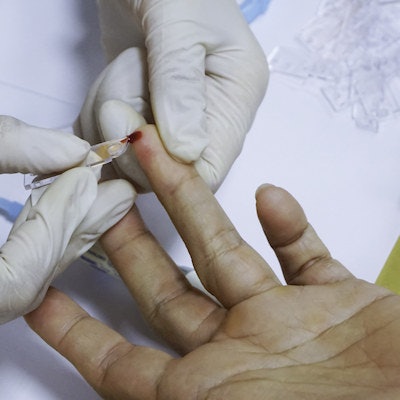
In 2020, sales of point-of-care (POC) testing reached $29.3 billion, according to Kalorama Information, a sister publication to LabPulse.com. New COVID-19 tests fueled growth while the pandemic ravaged business in other test categories.
 Bruce Carlson from Kalorama Information.
Bruce Carlson from Kalorama Information.In addition, new technologies and increased demand contributed to growth in the markets. A contributing factor to slower growth in some segments was pricing strategies that continued to discount the cost of POC diagnostic testing in some segments and higher cost in other segments of testing.
In some segments, COVID-19 caused a contraction of the segment due to lockdown, closures, limited physician visits, and a reduction in elective and outpatient surgery. This according to Kalorama's report: "The Worldwide Market for Point-of-Care (POC) Diagnostic Tests, 8th Edition."
The story of the POC market in 2020 is one of overall growth, but tell that to the companies that did not have an infectious disease test and you may hear a different story. POC testing is fueled by physician visits, but 2020 saw a disturbing downturn in visits to healthcare practitioners for preventive visits, which affected the majority of test products.
Specifically, Kalorama's report notes the following.
- The POC blood and electrolytes testing market was negatively affected by COVID-19. This was mainly due to lockdowns, limited physician/patient visits, and a reluctance of patients to seek medical attention. Routine blood workups were limited along with other non-life-threatening assessments. The market contracted about 7% for 2019-2020.
- The POC cardiac marker testing market was negatively affected by COVID-19. The double-digit contraction was due to patient lockdowns and limited access to physician and laboratory facilities.
- The POC coagulation testing market was negatively affected by COVID-19. This was mainly due to lockdowns and limited physician/patient visits. The self-testing portion contracted due to patient lockdowns and limited availability to purchase coagulation testing materials. The professional segment also declined significantly due to the same issues. The market contracted more than 20%.
- The POC colon cancer screening/fecal occult blood testing market was slowed by COVID-19. This was mainly due to lockdowns, shuttering of outpatient surgery centers, and limited physician/patient visits. Both segments of the POC colon cancer screening/fecal occult blood testing market grew only 3% from 2019-2020. That's ostensibly good news, but it had been growing double that previously.
Meanwhile, the POC infectious disease market grew at over 300%, which made up for the entire market loss in other areas.
Overall, there are some promising trends for POC to come out of the crisis. One is the increased purchasing use of molecular systems, which were fighting for a place in the market just three years ago.
Now, Abbott, Biomerieux, and Cepheid all reported brisk instrument sales and customer demand for high-sensitivity tests in the front lines of the pandemic. Even before COVID-19 tests were developed in the U.S. for these systems, the companies had 2020 orders based on sales to China and Italy, and flu testing to rule out COVID-19.
Kalorama suggested that buying for the COVID-19 pandemic won't just stop when vaccines do their work. These systems are in-lab, and they can all test for flu, which will still have to be contended with each year.
This article only discusses a few categories. Kalorama's report has details on scores of POC testing categories, including POC tests for COVID-19.
Bruce Carlson is the publisher of Kalorama Information, part of Science and Medicine Group. Kalorama's market report on molecular point of care can be found on Kalorama's website.
Disclosure: LabPulse.com is a sister company of Kalorama Information.



















